Climate change: Carbon-reducing seagrass planted off Welsh coast
- Published
- comments
A million seagrass seeds are being planted off the Pembrokeshire coast
A million seagrass seeds are being planted as part of Britain's largest project to save the "wonder plant".
Experts say seagrass helps tackle the effects of climate change by absorbing carbon dioxide faster than trees.
But up to 92% of the plant may have disappeared from the UK's coast over the last century, research has found.
Work has now started on lowering the seeds onto the seabed off Pembrokeshire to create a new 20,000 sq m (215,280 sq ft) meadow.
Scientists hope it will also help boost fish numbers and support marine wildlife.
Carbon-reducing seagrass to be planted off the Pembrokeshire coast
Seagrass, which is found in shallow waters of coastal regions, has been declining globally at a rate of about 7% a year since 1990.
That is a result of long-term development of our coastlines and pollution of the sea, according to project leader Dr Richard Unsworth, of Swansea University.
"It is not that we can blame one person, industry or organisation, it's the growth of a population around the coast," he said.
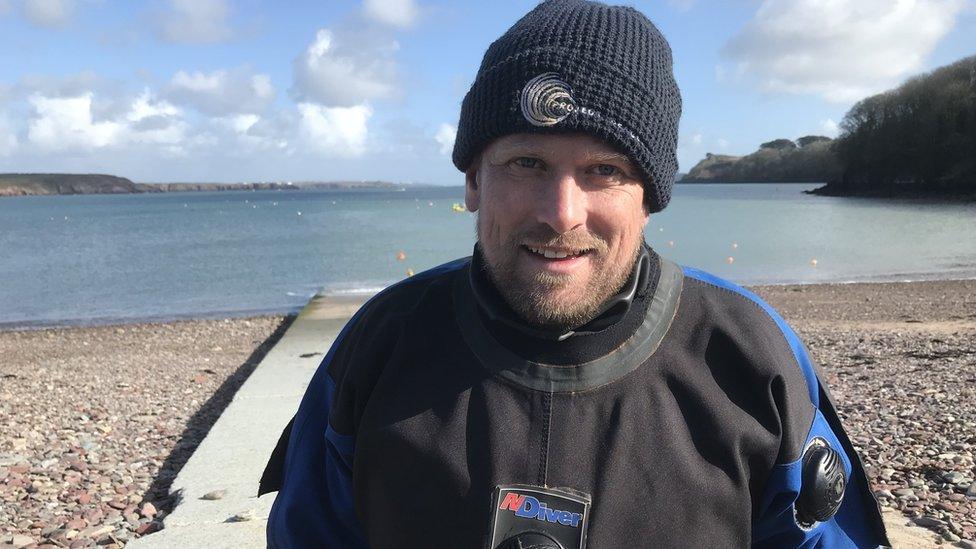
Dr Richard Unsworth said seagrass is "incredibly productive"
"Planting seagrass is an opportunity to reverse that loss and start to kick into action a recovery for our seas around the UK."
World Wildlife Fund (WWF), Sky Ocean Rescue and Swansea University say the underwater plant is key to reducing carbon dioxide - a gas which contributes to global warming.
They hope the 4.9-acre (2 hectare) project at Dale Bay will also provide a nursery for young fish and a habitat for invertebrates.
"It's incredibly productive and just sucks carbon into the sediments, traps particles that are locked there for millennia," said Dr Unsworth.
"That means that carbon dioxide is not in the atmosphere."
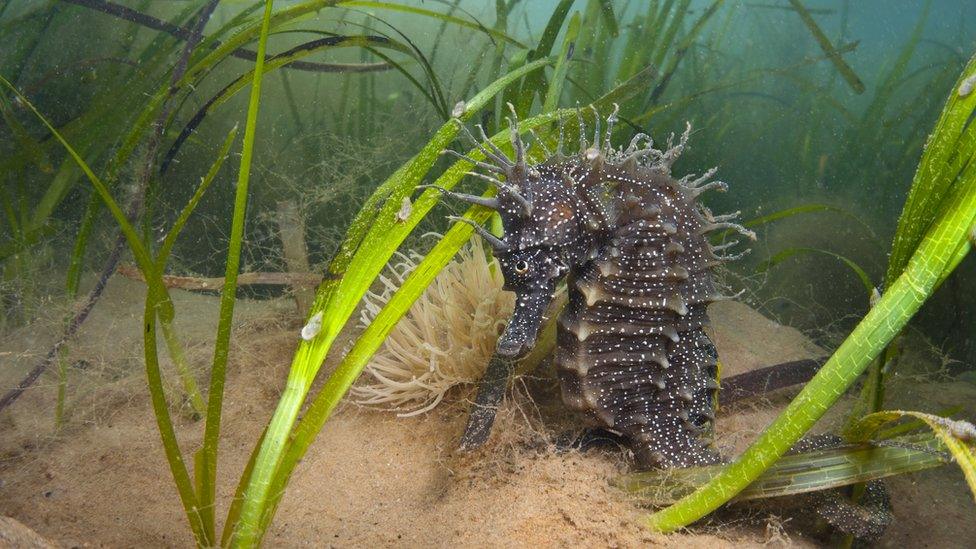
UK seagrass meadows house species such as endangered seahorses and sea snails
Last summer, 750,000 seeds were gathered from sites around the British coast and stored at the laboratories in Swansea University.
The seeds have been transferred into small hessian sandbags and lowered onto the seabed.
Another 250,000 seeds will be gathered later this year and added to the meadow in November.
"We see seagrass as this wonder plant because of its ability to fight climate change, to help fish stocks, coastal communities and livelihoods," said Alec Taylor of WWF.
"We need to expand hundreds of thousands of hectares of seagrasses, saltmarshes and other coastal ecosystems to avoid some of the damages from climate change."
Why is seagrass important?
It takes carbon from the atmosphere up to 35 times faster than tropical rainforests
It accounts for 10% of annual ocean carbon storage globally, despite only taking up 0.2% of the seafloor
It protects coasts from coastal erosion
It is a habitat for many types of fish like cod, plaice and pollock
It produces oxygen
It cleans the ocean by absorbing polluting nutrients
Source: WWF, Sky Ocean Rescue, Swansea University
- Published4 September 2019
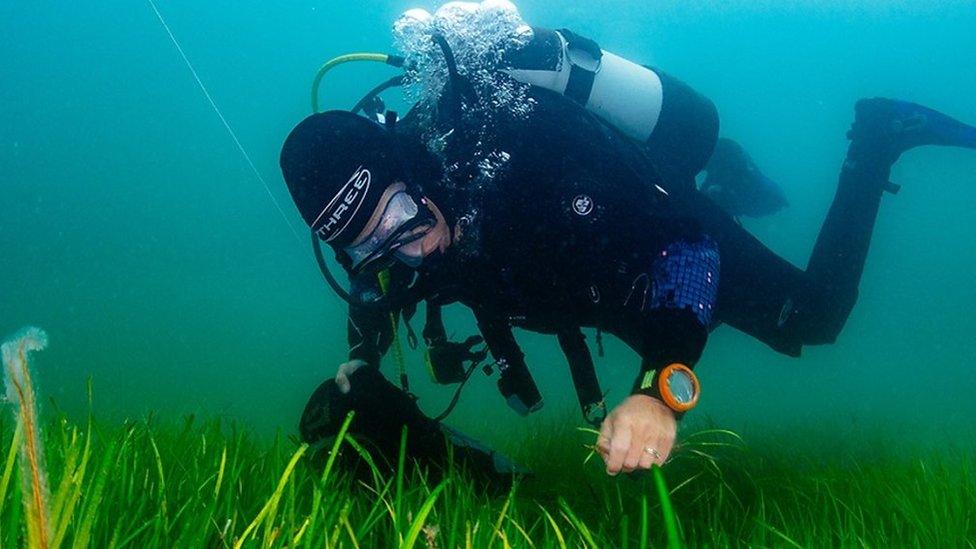
- Published4 September 2019
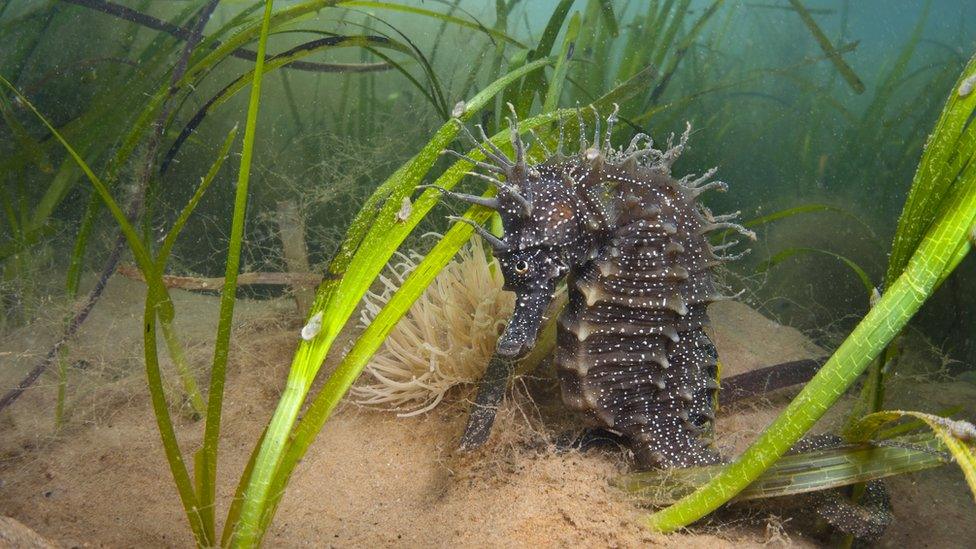
- Published29 January 2020

- Published21 May 2018
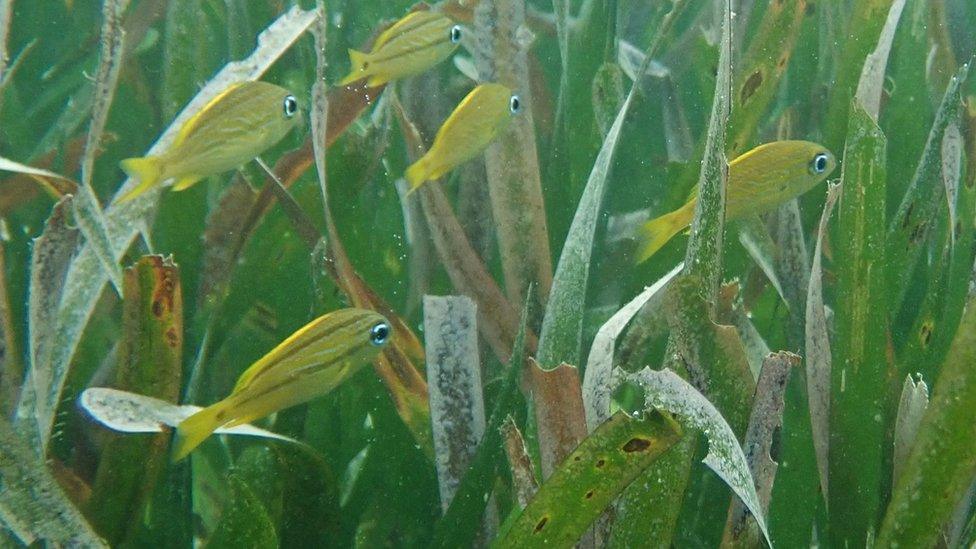
- Published17 November 2017
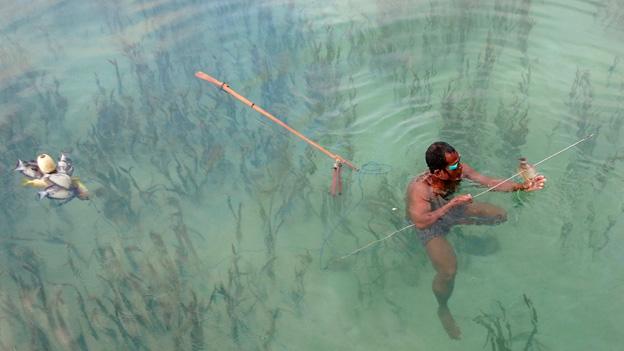
- Published24 April 2017

- Published16 February 2017
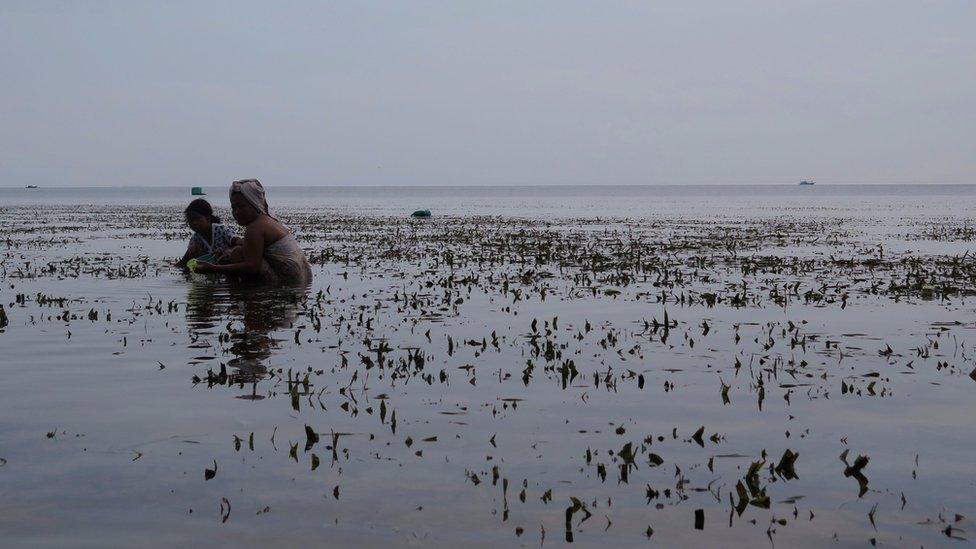
- Published10 October 2016
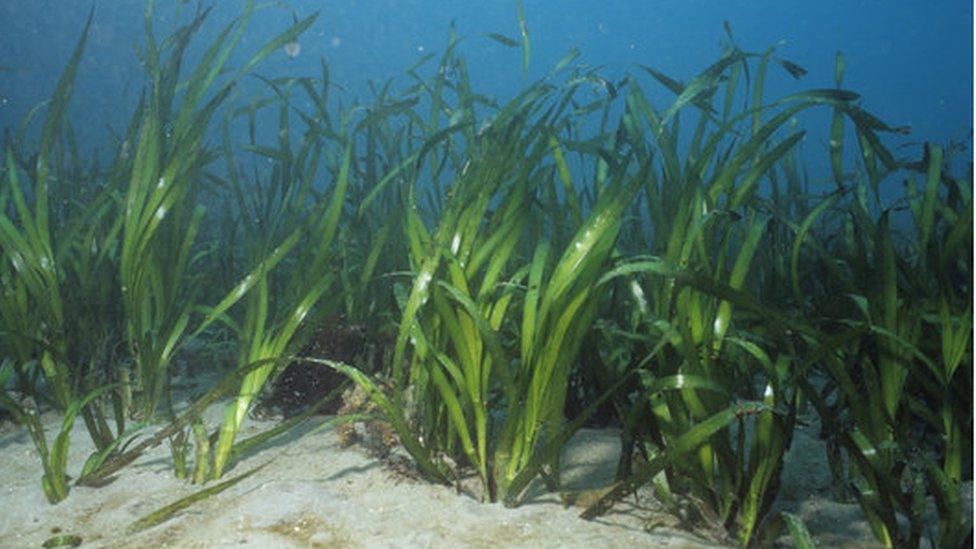
- Published13 January 2016
